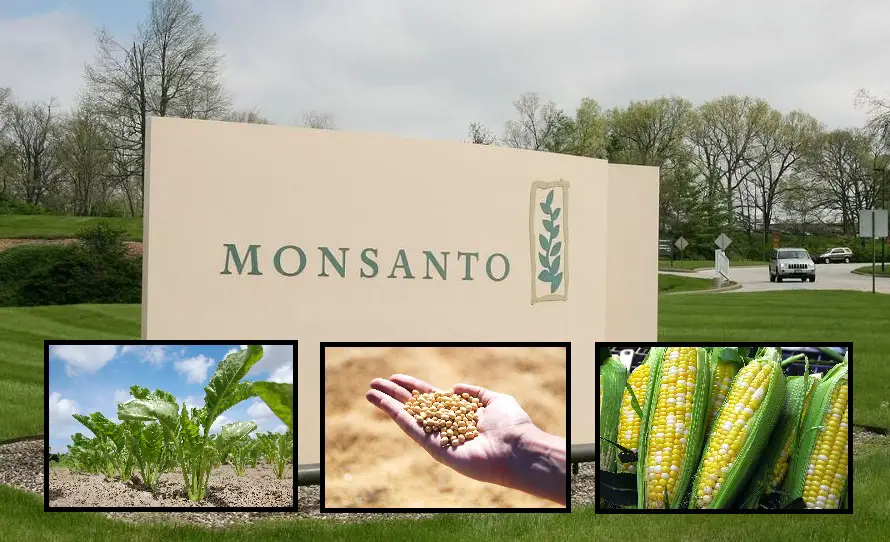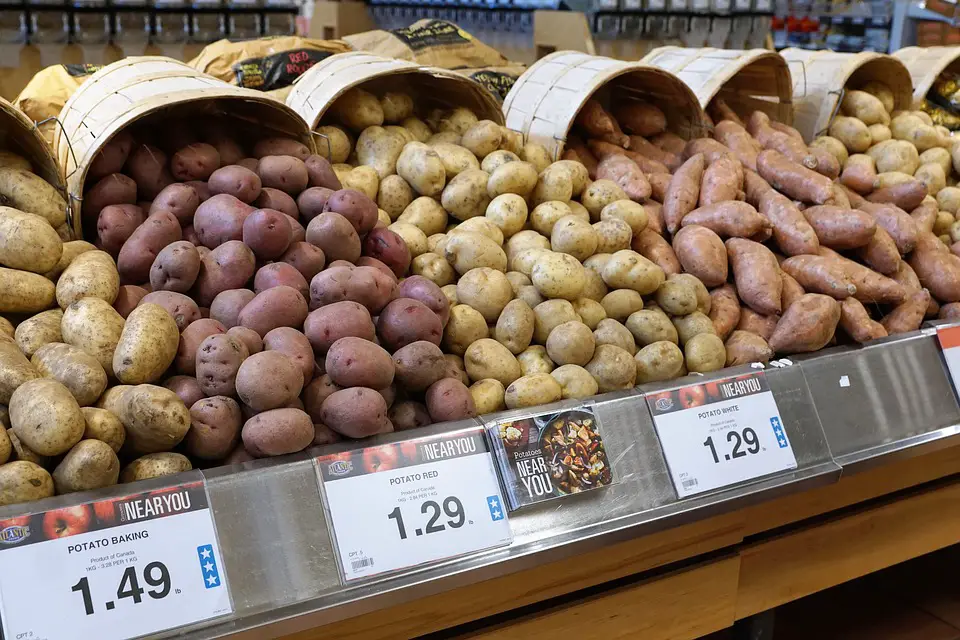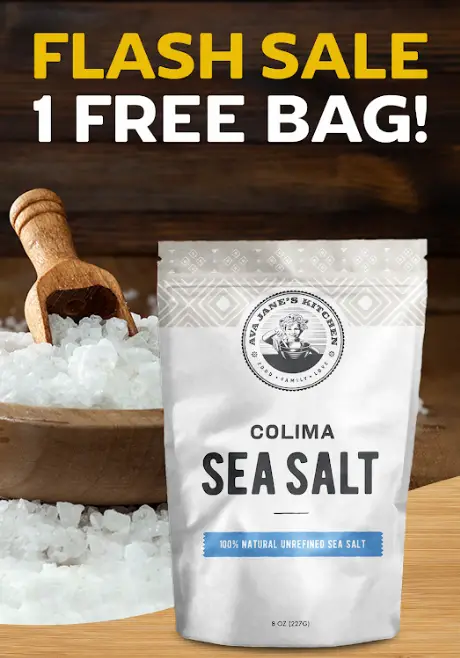
Photo of Monsanto HQ via Glassdoor.com.
Genetically engineered food, also known as GMOs or genetically modified organisms, has practically become a household term in recent years.
But most people still have no idea what foods are actually GMO and which aren’t, ahd haven’t adjusted their shopping lists accordingly.
Confusing, inaccurate Internet memes and commentary from pundits like Neil DeGrasse Tyson, who falsely equated hybrid crops with actual GMOs created in a lab (the term GMO first sprung up to describe this type of “GE” food), are not helping matters, either.
For example, while several social media memes have shown pictures of “GMO tomatoes,” it’s well worth knowing that GMO tomatoes are actually not on store shelves anymore. The Monsanto creation known as the “FlavrSavr” tomato was the first ever true GMO to be made available commercially, but it was quickly scrapped due to marketplace rejection.
Other supposedy “informative” memes show foods like seedless watermelons as being GMO, even though they hybridized and not actually genetically engineered.
The true GMO foods to watch out for are relatively simple to remember, but the list is growing every year thanks to the potentially dangerous new “CRISPR” technique that allows even armchair scientists to tinker with the genetic structure of our food (with no long-term safety testing).
With that in mind, the following are the 10 most important GMO crops to memorize, know and avoid in time for your next grocery shopping trip.
The Top 10 GMO Foods to Avoid in the United States
The numbers for genetically engineered crops in the United States are always changing as farmers and corporations work to meet consumer demand for non-GMO foods, and companies like Monsanto continue to come out with new “technologies” to sell farmers.
But this much we know for sure: the U.S. grows far more GMO crops than any other nation, even though GMOs are mostly rejected worldwide due in large part to environmental and safety concerns.

Seedless watermelons are sterile hybrids (containing undeveloped white seeds), not GMOs. Photo via Steven Depolo/Flickr
Most GMOs come from a small handful of countries, chief among them the U.S., Argentina, Brazil and India, while most of Europe bans their cultivation (as nearly 40 countries worldwide do).
When it comes to GMOs, there are 10 major foods or food ingredients to look out for:
1. Corn-
Cheap to produce and highly versatile, corn is the number one GMO food item to look for and avoid while shopping.
It may be hidden under several different names: high fructose corn syrup, maltodextrin, modified food starch, and several others. Luckily, organic corn chips and other products have become widely available.
As of 2017 about 89 percent of U.S. corn was made from herbicide tolerant GMO corn; Bt insecticide-producing GMO corn is also widely used (see stats here). Up to 92 percent of all corn is GMO in total.
2. Soy-
As much as 94 percent of soybeans are herbicide (in most cases Roundup) tolerant GMOs. The biggest sources of soy to watch for include cooking oils, soy lecithin in packaged foods, and more.
If you must eat soy, look for fermented versions of it including miso or natto, and make sure it’s organic.
3. Canola-
Cheap to produce and sell, canola oil (formerly known as rapeseed oil) is in countless thousands of products.
It is associated with many side effects, and usually around 90 percent of all canola grown is GMO (ditch the canola oil for cooking and try a quality organic coconut oil or even organic avocado oil)
4. Sugar Beets-
While non-GMO shoppers have forced a resurgence in cane sugar in recent years, GMO Roundup Ready sugar beets still make up a huge portion of the U.S. supply.
If a food ingredient says “sugar” on the package, there’s a good chance (over 90% as of last estimates) that it’s GMO, so do your best to avoid it whenever possible.
5. Cotton-
Most cotton in the United States is GMO, either herbicide tolerant or insecticide-reistant Bt as shown in the official 2017 stats (about 94 percent). It’s not especially common in food products but cottonseed oil may also be used in packaged snacks.
Cottonseed oil has many potential side effects and is one of the dirtiest, most pesticide laden crops out there, making it important to avoid.
6. Potatoes-
While the second half of this list doesn’t feature crops that are nearly as prevalent as the five main ones above, it is important to be aware of the secondary GMO crops that may still be found on store shelves.

Three new varieties of GMO potatoes are set to hit store shelves in small quantities. Click here to learn more. Photo via Pixabay.com.
The GMO potato is a surprising new entry to this list, and while it’s still not widespread by any means, companies are planning to roll out advertising campaigns to convince consumers of their safety (and perhaps even benefits, by supposedly reducing a key cancer-causing chemical).
Unfortunately, the potatoes won’t be labeled so consumers won’t even know if they’re GMO, and once again no long-term safety testing has been conducted.
You can learn more about the new potatoes (and how to avoid them) in this article.
7. Apples-
Another new unlabeled GMO food to watch out for, genetically engineered “non-browning” GMO apples are not widely found, but are currently being sold in limited quantities.
Will they meet the same fate as the now-defunct FlavrSavr tomato or will they catch on in the food service industry? That depends largely on whether consumers will accept or reject them.
The apples were approved despite a massive outcry from grassroots organizations, and are created using the new CRISPR technique. Here’s what you need to know in order to avoid them (watch out for the label ‘Okanagan Specialty Fruits’ or ‘Arctic Apples’ for starters).
8. Squash-
One of the most unexpected entrants on the list is squash, which includes about 25,000 acres of GMO crops being grown in the United States according to Time magazine.
The list of GMO squash includes zucchini and yellow summer squash, so be sure to buy organic and/or to know your farmer whenever possible.
9. Alfalfa-
In 2011 the FDA made the highly controversial decision to approve Roundup Ready GMO alfalfa, which is mainly used as a feed crop for cattle.
The biggest concern with this new GMO crop is its ability to contaminate other non-GMO crops in the field due to wind drift. While alfalfa is a high-vitamin and mineral superfood that is commonly sold in supplements, it’s important to buy organic and know your source whenever possible.
10. Papaya-
One of the most nutritious tropical fruits in the world, papayas are incredible for digestion, fight inflammation and have anti-cancer properties. Even the black papaya seeds in the fruit have a purpose as they help to kill parasites within the body.
But it’s important to know your source when buying papayas, as GMO “rainbow” versions from Hawaii are now prevalent on store shelves afer being introduced in the 1990s.
Some say this “innovation” helped to save many farmers’ crops; others say the numbers weren’t as large as the GMO industry makes them out to be and point out the rise of a new fungal disease that has led to the spraying of more dangerous chemicals on these crops.
At any rate, the goal of the health conscious consumer should be to buy organic and non-GMO whenever possible, especially when buying from Hawaii.
Final Thoughts On The Top 10 GMOs to Avoid
While the rise of GMOs has been a mercurial one in the U.S. due to secrecy and government collusion, this approach and a pronounced lack of long-term independent scientific testing has led to a backlash of epic proportions.
Now that a large movement of Americans is finally aware of the potential environmental and health risks of GMOs and their associated chemicals, the challenge is to take the movement to the next level —and we can only get there through education.
Make sure to study this list, memorize it, and share with friends whenever you get a chance: this is one food fight we can’t afford to lose, and the continued lack of understanding over which GMO foods we most need to avoid is only hurting the cause.
Recommended Reading:
Broken Promises of Genetically Modified Crops (New York Times)
FDA Approves Three New Types of GMO Potatoes — Here’s What You Must Know to Avoid Them
Altered Genes, Twisted Truth (Book; Via Amazon.com)
Thanks for installing the Bottom of every post plugin by Corey Salzano. Contact me if you need custom WordPress plugins or website design.











